Teaching Games – A Healthy Start to Puppy Training
by Jennifer Wheeler and Ovidiu Stoica
Last edited on August 21, 2021
Time and again, we are asked by new puppy owners when they can start puppy training, and without fail our answer is met with surprise: put obedience training aside and play with your pup. Socialize and play! Play and socialize!
If you focus on this until your dog is about six months old, all the formal training will be more intuitive. Why? Because play is not just about fun and exercise. Learning how to play will allow you and your puppy to establish the building blocks necessary for training. Play is a way of interacting with your puppy that will help you build a positive relationship together; you will learn to understand each other; you will develop skills and habits to promote lifelong learning; and, it is through play that you will introduce motivating factors and the concept of obedience training.
Play requires work and engagement from you – it is your job to keep your puppy’s attention by showing excitement and by rewarding her when she plays well (and the rewards are not just treats). This is your opportunity to introduce and teach a variety of motivating factors to your puppy: petting, verbal praise, toys, food, and play itself. By using all of these incentives and modes of communicating in different ways and at different times during play, you are establishing and practicing lifelong tools.
Three Questions to Consider Before Starting the Fun and Games
- Is your dog motivated by food?
Even if she isn’t, try incorporating high reward treats intermittently in your games paired with an excited voice. It is important to have food in your arsenal of incentives, even for a dog that isn’t driven by her belly. - If your pup doesn’t seem interested in toys, what can you do to make her excited about a game that involves a toy?
Remember, the goal is to teach your dog to respond to as many motivating factors as possible. - Does your dog respond enthusiastically to affection and praise?
Practice using affection as an incentive by weaving enthusiastic praise (with your voice and actions) into games, looking for an excited response from your pup.
For some dogs (and for some parents!) play comes more naturally than to others. This is all about practice, paying attention, and using the diverse range of motivating factors at your disposal. Over time you will come up with your own ways of engaging your puppy in play, but we’ve detailed a few games to get you started.
Chase and Retrieve
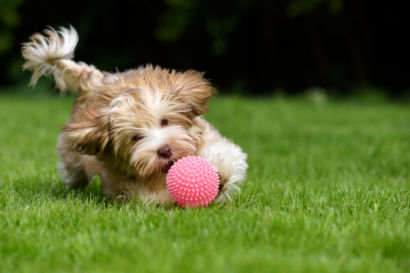 The simple act of throwing a ball or toy for your puppy and teaching her how to bring it back to you is one of the most useful skills she will learn.
The simple act of throwing a ball or toy for your puppy and teaching her how to bring it back to you is one of the most useful skills she will learn.
Why?
- A lifelong tool for exercise: If your puppy can chase and retrieve, you have an invaluable tool that can be adapted to any environment – inside or outside, city or country. From efficiently getting out energy with a ball at the dog run after being cooped up in an apartment all day, to fetching sticks from the lake on a hike, this game is universal in its various iterations.
- Foundations for training: Training is a process that requires attunement from your dog, positive incentives, and plenty of breaks to release energy and have a bit of fun. Chase and retrieve is a game that will help you to meet all of these criteria. During a training session, you will pause at regular intervals to throw the ball for your pup. This serves not only as a break, but as a reward because you don’t want to rely solely on treats. Furthermore, the game itself actually mirrors the interactions between dog and trainer when learning a new skill – total engagement, a prompt from the trainer (ball is thrown, “go get it”), performance of the task (retrieve), then reward (continuation of play). By teaching your puppy this game at a young age you are, in fact, introducing her to the rhythm of training.
- Bonding and engagement: when you successfully teach your puppy to run away from you and then turn around and come back, you have achieved something important. You have become the source of fun and excitement for your puppy. You are in the game together, in sync with one another, and she returns to you for guidance even after running freely toward other fun distractions.
How?
Before you throw the ball for your puppy, make sure she is paying attention to it. Show it to her and say “ready?!” Make sure she is watching where you throw the ball, and when she picks it up immediately praise her and encourage her to bring it to you while taking some steps backwards. By moving away from your pup (but with your body still facing her), you are actually incentivizing her to come. Her instinct to follow kicks in. Reward her with praise and affection when she brings it back. Then repeat.
An enhanced version of chase and retrieve is to use two balls. As soon as your puppy returns with the first ball, she will see that you have a second ball in your hand. This will encourage her to immediately drop the ball she has just retrieved, and as she does so you will reward her by throwing the second ball, and the game continues this way. In addition, don’t forget to mix up the toys. Try using sticks, rope toys, or frisbees and stay away from tennis balls, which will grind down your pup’s teeth. By changing the toy you will help your dog to generalize the concepts, and to make the game and you rather than the ball her focus. If she gets sidetracked and starts chewing or destroying the toy, you will end the game.
Catch Me if You Can – Running With Your Pup
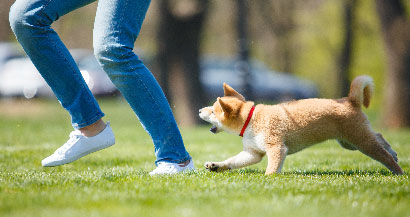 Running with your puppy does not mean putting her on a leash and jogging around a track while you listen to music. This is a different kind of running that keeps your dog engaged and builds on the new attachment and bond she feels towards you.
Running with your puppy does not mean putting her on a leash and jogging around a track while you listen to music. This is a different kind of running that keeps your dog engaged and builds on the new attachment and bond she feels towards you.
If you get up early and head to a quiet section of the park, you will be the most attractive thing around to your new pup, and you will work off of her instinct to follow you at this young age. Start off by moving backwards and enticing her to follow. It is a game. When she reaches you, reward her with excited praise, sometimes mixing it up with toys and treats. As she catches on, make it more difficult by going backwards faster, turning, darting from side to side. She will be excited as long as you are paying attention to her and interacting.
Again, this activity is great for bonding and exercise, but will also lay the foundations for teaching her to come because your puppy will learn that running to you is fun.
Tug o’ War
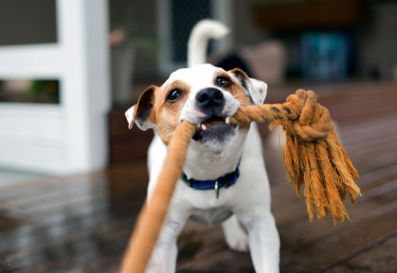
Tug o’ war is fun and a great game for bonding with your puppy, but it will also help your puppy build her strength and provide opportunities for you to introduce the “drop it command.” It is one of the first games you will be able to play with your young puppy because it is adaptable to any space. Slowly introduce her to the game by sitting on the floor – at her level – with a toy in your hand, moving it around, and encouraging her to hold it in her mouth. This is especially useful when she starts chewing things like shoes that are off limits. You’ll give her a toy to play with instead, making it more appealing to her by keeping a hold on it and engaging her with your voice and body language. You’ll let her win most of the time, feeding her attraction to the game with the reward of getting the toy. Switch it up with different types of toys!
Some readers will see tug-of-war and ask, “won’t that make my puppy aggressive?” Absolutely not. That is a widespread but completely false myth. In fact, this game is an incredible tool for teaching your dog to drop things when she is asked – even high reward goodies like bones. That may sound counterintuitive, but here is how it works: when your pup wins the game, sometimes you’ll grab the toy again and resume the game, but sometimes you will pause the game to work on a bit of “drop it” training. While she has the toy in her mouth, you will use one of two approaches to get her to drop it. The first way is to gently pry the toy from her mouth while giving the “drop it” command followed by “good girl!” when she lets go. This is easy with young puppies because they usually have soft mouths. The second way is to hold a treat in your palm and let her have a sniff. She will likely let go of the toy to reach for the treat, and when she does you will give the “drop it” command. Through repetition she will begin to associate the command with the action of dropping the toy in both of these approaches. You will reward her with praise, treats, and of course, by resuming the tug o’ war game.
Later, when your pup has gotten ahold of something she shouldn’t have, or it’s just time to put the bone away, you’ll ask her to drop it and she will do so with little resistance. She associates the command with a fun, positive experience which mitigates possessive instincts.
Aren’t we lucky that the process of educating a puppy starts with play and games? This is all about being connected, sharing a language, and building important tools for training, but don’t forget to have fun!
About the author
Jennifer is a writer and graduate of NYU School of Law. Jennifer researches and writes original, science-based articles for the NYC Doggies blog, and her writing on other topics can be found in the Huffington Post. Jennifer and Ovidiu have co-authored the upcoming book, WHOLE DOG PARENTING: EVERYTHING YOU NEED TO RAISE AND TRAIN AN URBAN PUP
Ovidiu has over 25 years of experience professionally working with dogs. In 1997 he started training dogs for private clients, dog conformation shows, and Schutzhund competitions and founded NYC Doggies in 2002. Ovidiu has co-authored the upcoming book, WHOLE DOG PARENTING: EVERYTHING YOU NEED TO RAISE AND TRAIN AN URBAN PUP

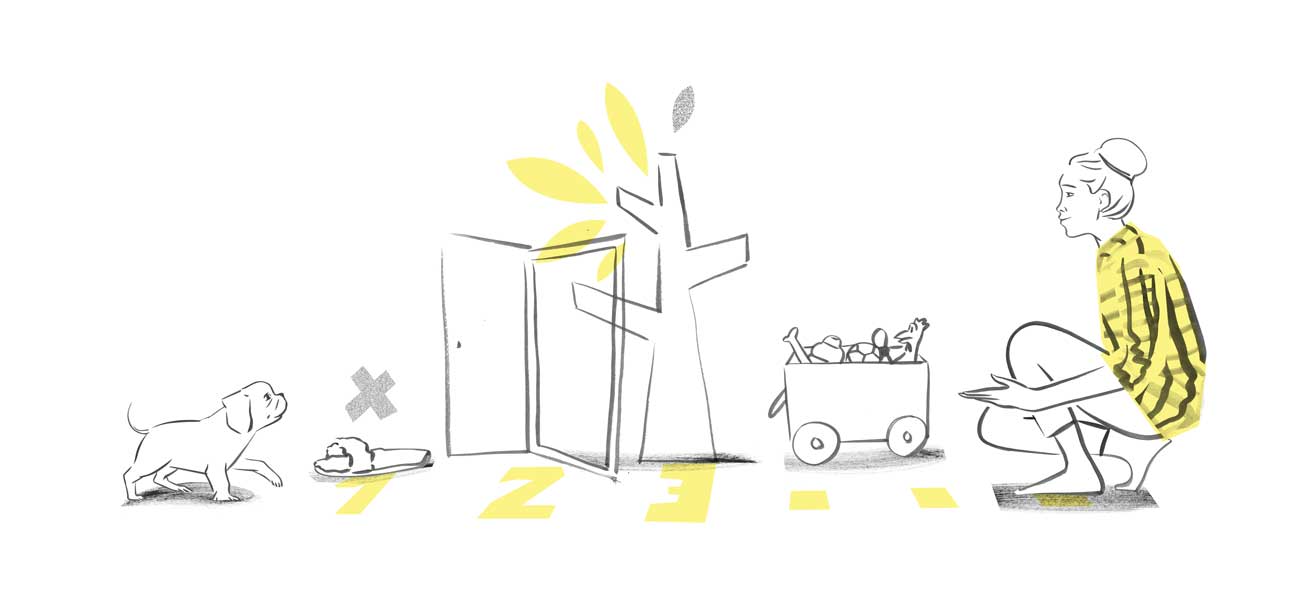
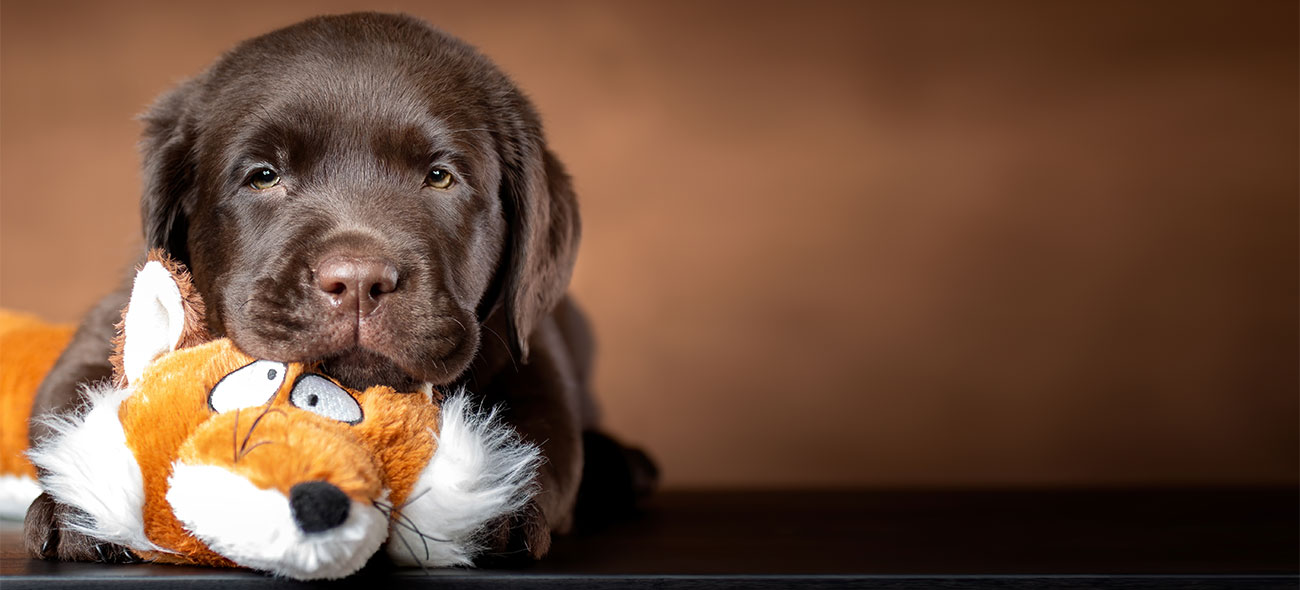
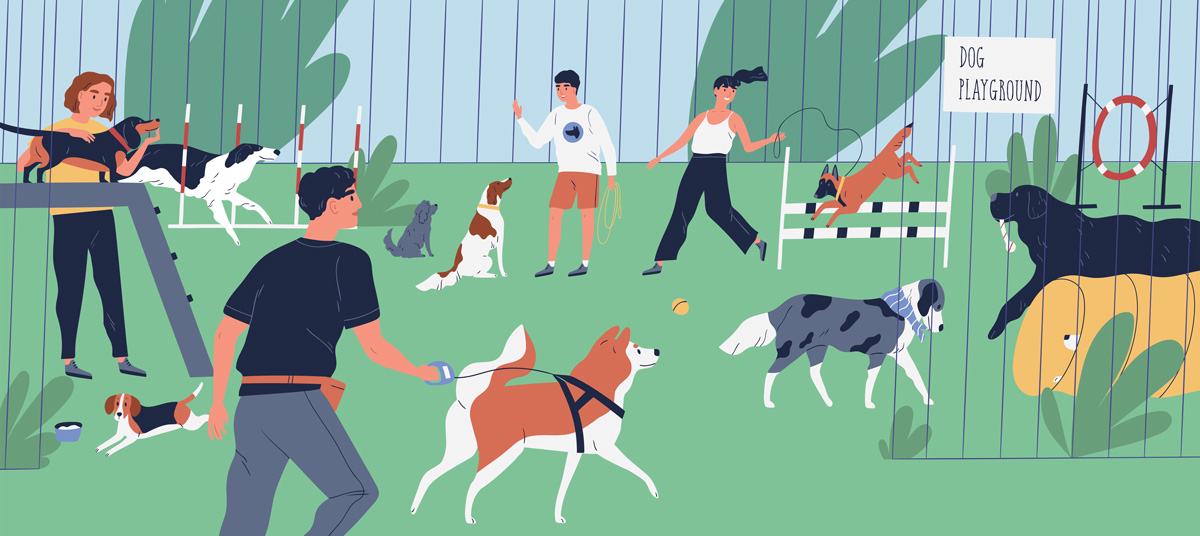
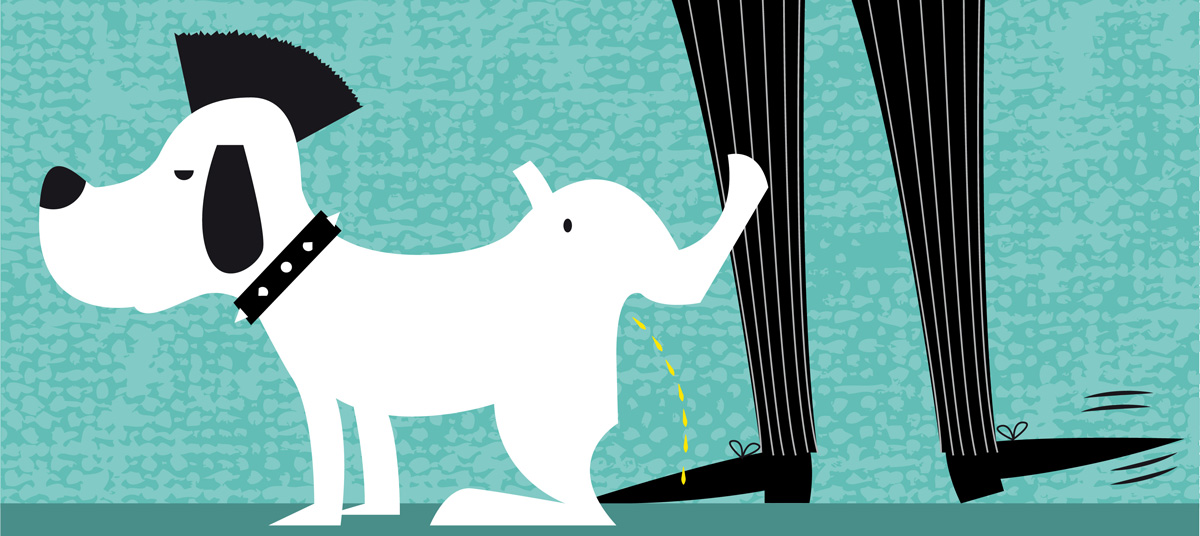
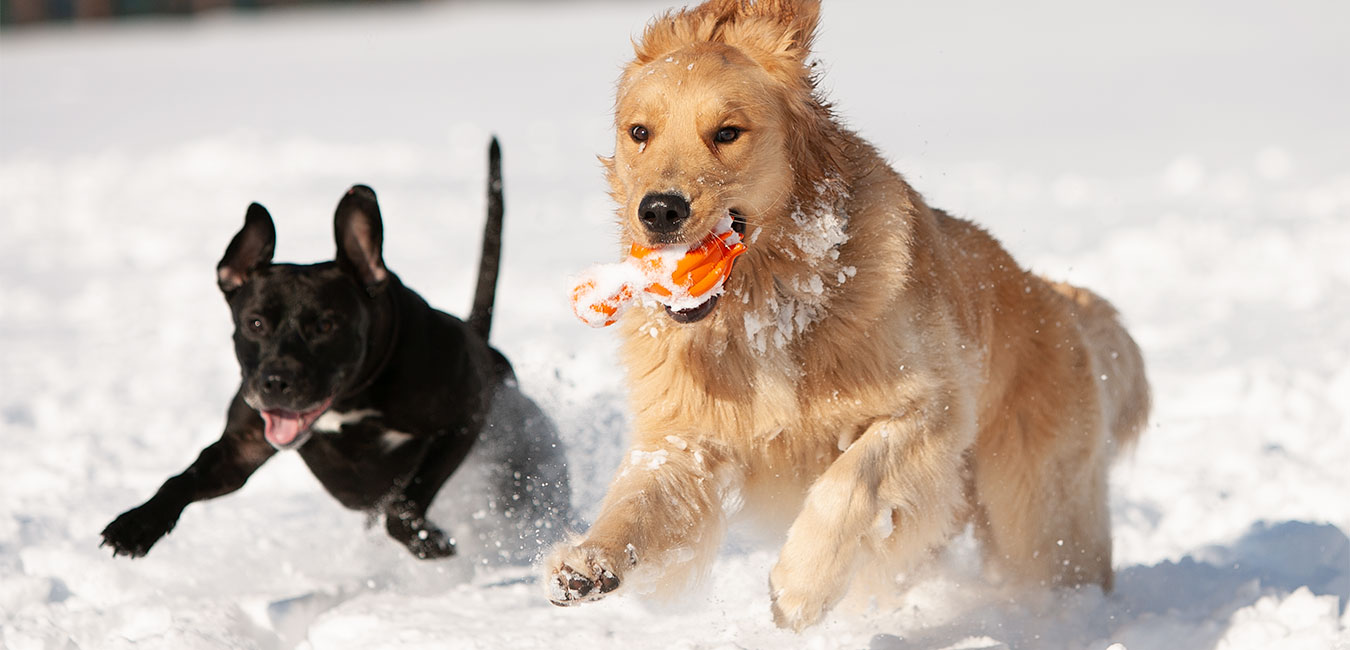
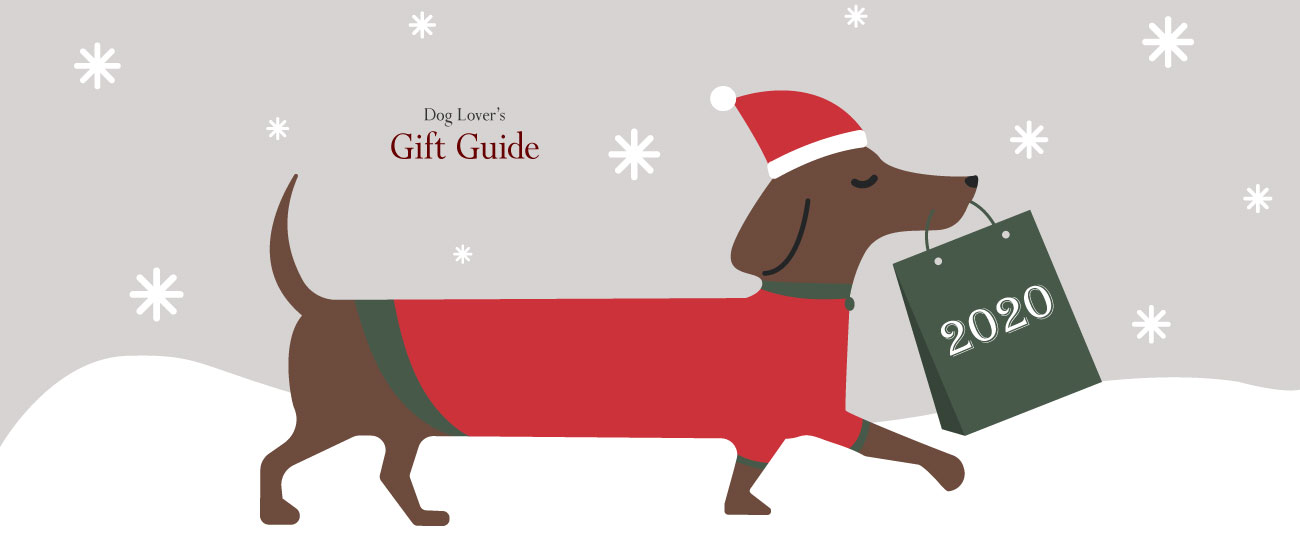
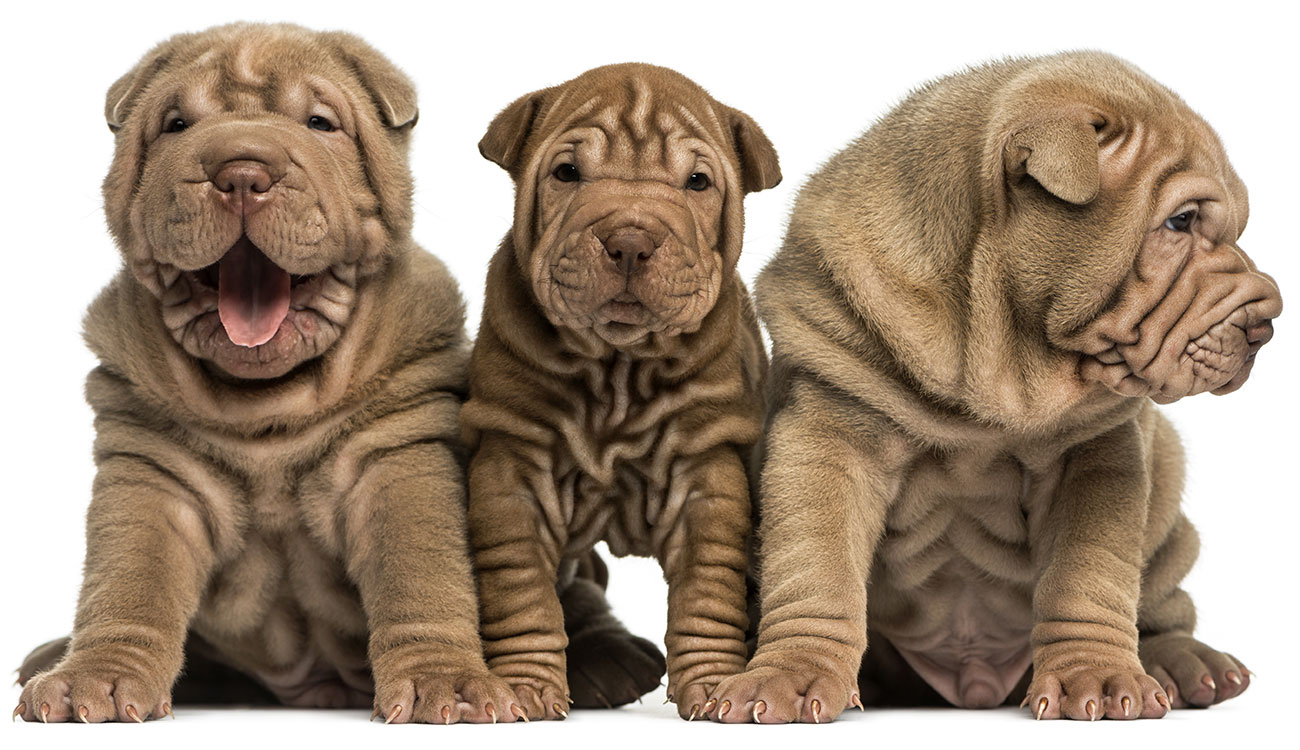
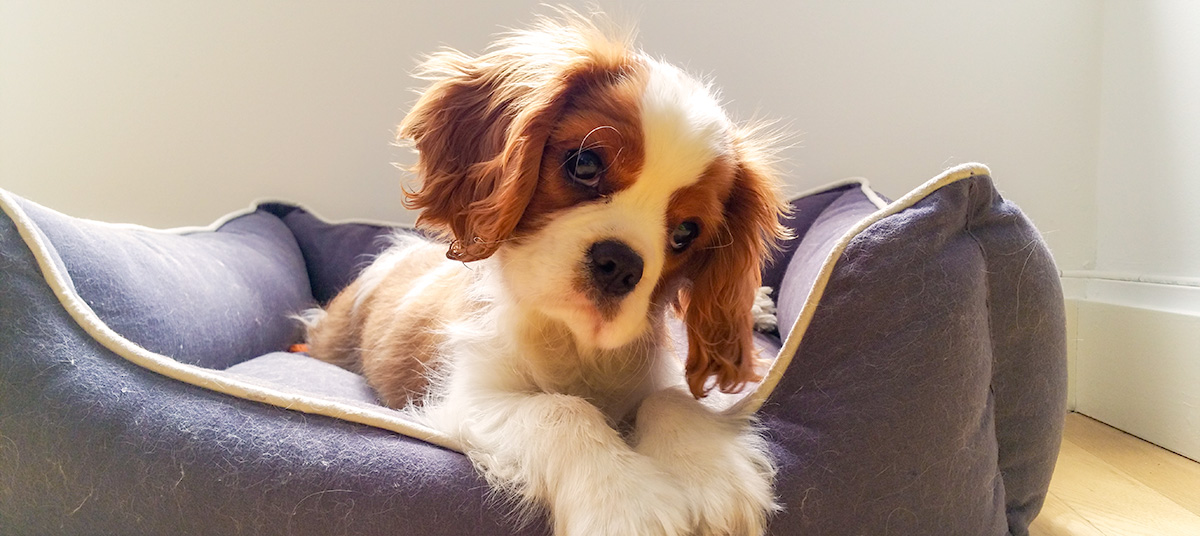
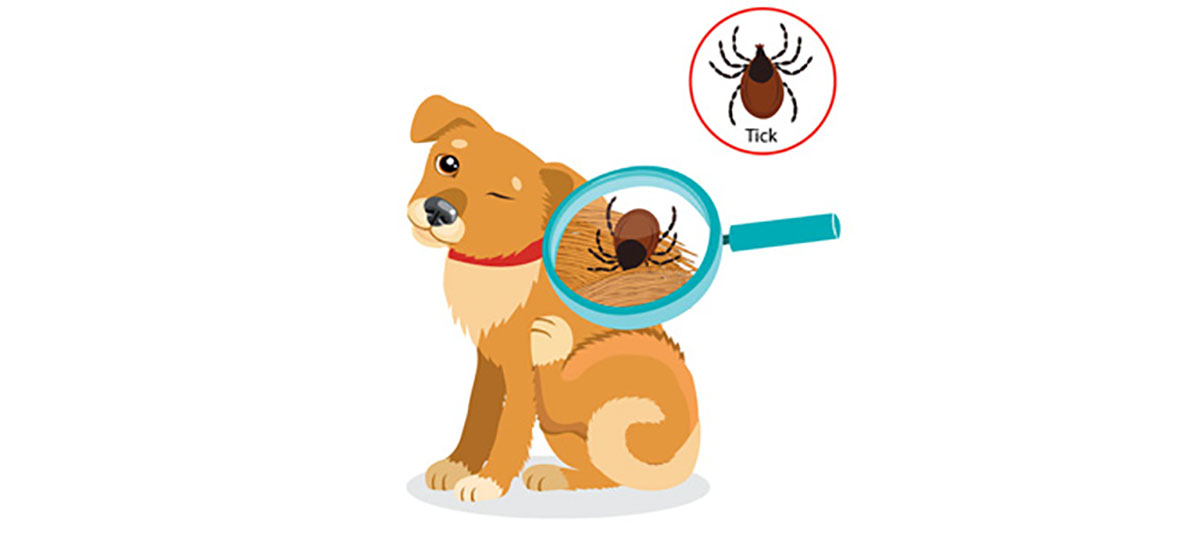
Leave A Comment